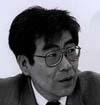Fumio Nanjo
|
|
|
Independent Curator, Art critic.
|
Japanese, Born in Tokyo in 1949.
Graduated from Keio University, Faculty of Economics (1972).
Faculty of Literature, "Aesthetics and Art History" (1977).
|
|
Selected Professional Positions: |
 | Program Director, Japan Foundation 1978-1986 |
 | Director, ICA, Nagoya 1986-1990 |
 | Founder, Nanjo and Associates, 1990 |
 | Lecturer, "Art Management," Keio University, since 1991. |
 | Researcher, Information Center of Art, Aichi Arts Center |
 | International Council Member, Irish Museum of Modern Art, Derry |
 | Member, CIMAM (International Committee of ICOM for Museums and Collections of Modern Art)
|
 | Boad Member, AICA(International Association of Art Critics)
|
|
|
Selected Exhibitions: |
|
 | Juror, Hugo Boss Award; Guggenheim Museum 1996 |
|
 | Curator, "TransCulture" 46th Venice Biennale 1995
|
|
 | "Of the Human Condition" 1994 Spiral/ Wacoal Art Center, Tokyo; Ashiya City Museum of Art and History |
|
 | "Christian Boltanski" ICA , Nagoya 1991 |
|
 | Juror, Carnegie International, Pittsburgh 1991 |
|
 | Co-curator, "Against Nature: Japanese Art in the Eighties"
Organized by Grey Art Gallery, New York University, MIT List Visual Arts
Center 1989-91 |
|
 | Commissioner, "APERTO 88" 43rd Venice Biennale 1988 |
|
The era is rapidly progressing. The problems of the 80's have now disappeared.
"The period of growth in economics, culture, art ,etc., has ended, from
this time forward, we will live in a peaceful but stagnant society as in
nirvana" is a statement by one who does not see reality.We are in a time of
invisible struggle and battle as if in war time.Our values and the
structure of the world are quietly, but steadily changing.
Some powerful force is pushing the situation ahead. It is the necessity of
history and it can change the world. It writes a new history. In this
situation, information technology is playing an important role. Without
notice but from a profound depth, the change is coming on a huge scale and
the new era will be born.
There are new possibilities in front of each and every one of us. It must
be in the vision of those who can see it. There will be many new problems
and new possibilities in new communication, networking, visual design,
expression of art, language of art, as well as a change in the method of
dialogue, the reaction of the second person, the existence of the third
person who watches the dialogue, etc. .
I wish to encounter such ideas in your proposals.
|



